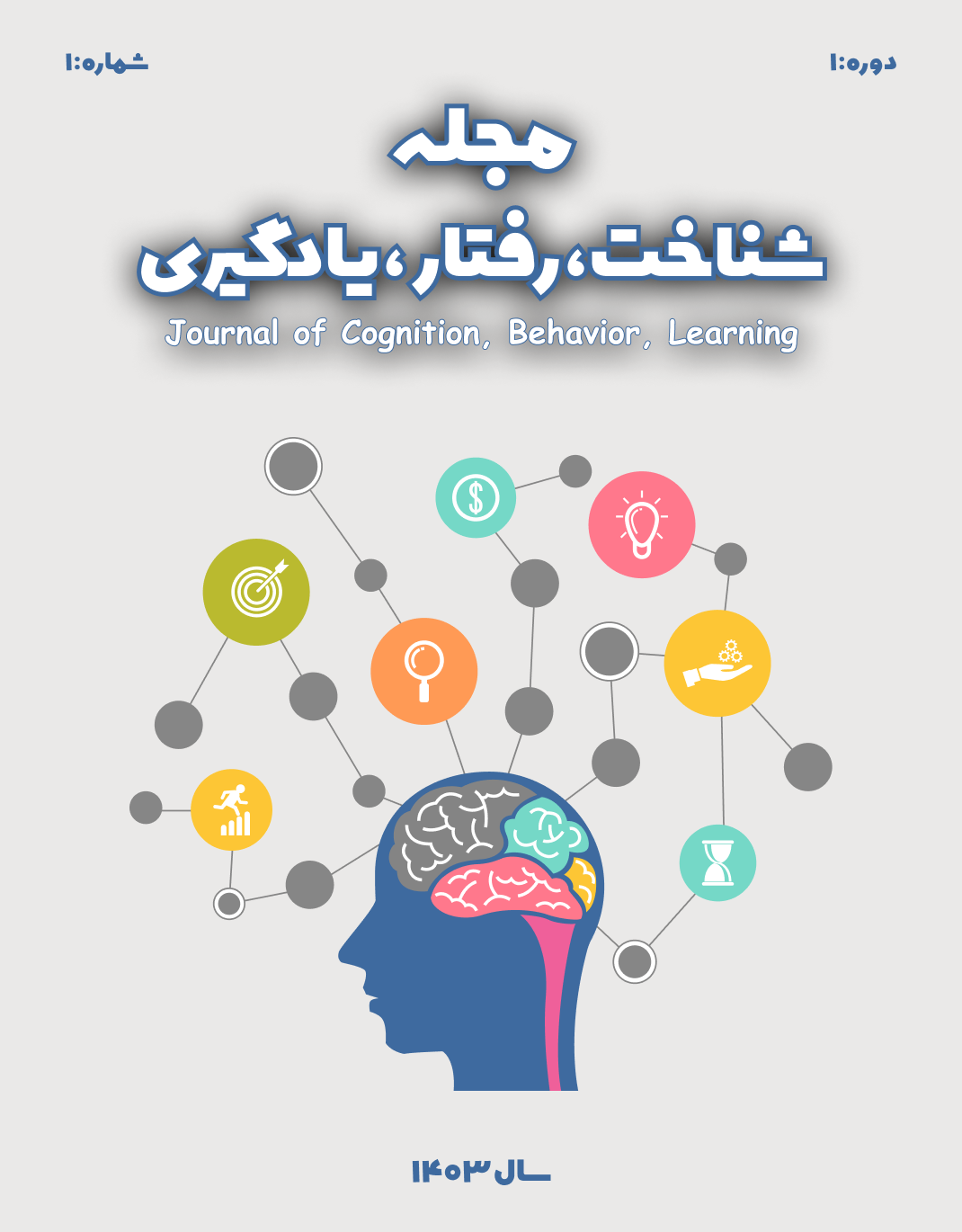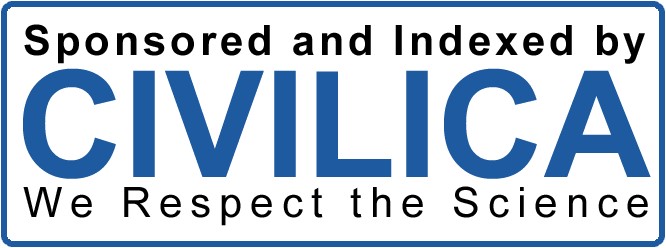Structural Model for Predicting Depression in Mothers of Children with Disabilities Based on Attachment Styles Mediated by Self-Conscious Emotions
Keywords:
Depression in mothers, Attachment, Shame, SinAbstract
The aim of the present study was to predict depression in mothers of children with disabilities based on attachment styles, with self-conscious emotions serving as a mediator. The research method was descriptive and correlational, with the applied objective of the study. The statistical population included all mothers of children with disabilities residing in Tehran in 2023, from which 250 individuals were selected using convenience sampling from virtual networks. The research tools included the Beck Depression Inventory (1996), the Revised Adult Attachment Scale by Collins and Read (1990), the Shame Experience Scale by Andrews and Hunter (1997), and the Guilt Questionnaire by Kugler and Jones (1992). Data were analyzed using structural equation modeling. The results showed that secure and anxious attachment styles predict depression in mothers. Self-conscious emotions, such as shame and guilt, also predict depression in mothers. Secure and anxious attachment styles, mediated by self-conscious emotions (shame and guilt), predict depression in mothers.
Downloads
References
Aftab, R., Barmas, H., & Abolma'ali Hoseini, K. (2020). Structural pattern of predicting suicidal ideation based on the five-factor personality traits with guilt mediation. Journal of Disability Studies. https://civilica.com/p/241113/
Akbari, B., Doupour, R., Kohansal, S., & Karimiyan, Z. (2019). Relationship between social support and attachment styles with psychological well-being of university students. Journal of Educational Research, 14(1), 21-38. https://www.magiran.com/paper/2024115
Amani, R., Eatemadi, A., Fatihzadeh, M. S., & Bahrami, F. (2012). The relationship between attachment styles and social adjustment. Clinical Psychology and Personality (Daneshvar Raftar), 19(6), 15-26. https://sid.ir/paper/208642/fa
Amare, T., Alemu, K., Ayele, T. A., Denu, Z. A., Mwanri, L., & Azale, T. (2024). Systematic Review and Meta-Analysis on the Effect of Depression on ART Adherence Among Women Living With HIV. PLoS One, 19(6), e0300106. https://doi.org/10.1371/journal.pone.0300106
Arabzadeh, Z., Aghdasi, A. N., Rostami, H., & Ahangar, A. (2024). Comparing the Effectiveness of Music Therapy, Dance Movement, and Art Therapy on the Mistrust/Mistreatment Schema in Women With Symptoms of Depression Aged 20-30. Aftj, 5(1), 219-228. https://doi.org/10.61838/kman.aftj.5.1.24
Besharat, M. A., Gholinezhad, M., & Ahmadi, A. A. (2003). Examination of the relationship between attachment styles and interpersonal problems. Journal of Psychology and Clinical Psychology of Iran (Andisheh va Raftar), 8(32), 74-81. https://www.sid.ir/paper/16754/fa
Bjornsson, A., Carey, G., Hauser, M., & Karris, A. (2010). The effects of experiential avoidance and rumination on depression among college students. International Journal of Cognitive Therapy, 3(4), 389-401. https://doi.org/10.1521/ijct.2010.3.4.389
Carter, E. A., Bond, M. J., Wickham, R. E., & Barrera, A. Z. (2019). Perinatal depression among a global sample of Spanish-speaking women: A sequential-process latent growth-curve analysis. Journal of affective disorders, 243, 145-152. https://doi.org/10.1016/j.jad.2018.09.006
Castilho, P., Martins, M. J., Pinto, A. M., Viegas, R., Carvalho, S., & Madeira, N. (2017). Understanding the effect of attachment styles in paranoid ideation: The mediator role of experiential avoidance. Journal of Contextual Behavioral Science, 6(1), 42-46. https://doi.org/10.1016/j.jcbs.2016.11.007
Debbané, M. (2019). Attachment and mentalization in contemporary psychodynamic psychotherapy. In (pp. 33-45). https://doi.org/10.1016/B978-0-12-813373-6.00003-9
Diamond, G., Mason, S., & Levy, S. (2019). Psychodynamic principles in attachment-based family therapy. In (pp. 349-360). https://doi.org/10.1016/B978-0-12-813373-6.00024-6
Elison, J., Garofalo, C., & Velotti, P. (2014). Shame and aggression: Theoretical considerations. Aggression and Violent Behavior, 19(4), 447-453. https://doi.org/10.1016/j.avb.2014.05.002
Fraley, R. C., & Roisman, G. I. (2019). The development of adult attachment styles: four lessons. Current opinion in psychology, 25, 26-30. https://doi.org/10.1016/j.copsyc.2018.02.008
Hashemi, S., Dartaj, F., Sadipour, E., & Asadzadeh, H. (2017). Structural model of shame and guilt emotions based on parental parenting styles: The mediating role of attachment styles. Journal of Applied Psychology, 11(4), 475-493. https://sid.ir/paper/151899/fa
Hayes, S. C., Strosahl, K., Wilson, K. G., Bissett, R. T., Pistorello, J., Toarmino, D., & McCurry, S. M. (2004). Measuring experiential avoidance: A preliminary test of a working model. The Psychological Record, 54(4), 553-578. https://doi.org/10.1007/BF03395492
Jewell, T., Gardner, T., Susi, K., Watchorn, K., Coopey, E., Simic, M., Fonagy, P., & Eisler, I. (2019). Attachment measures in middle childhood and adolescence: A systematic review of measurement properties. Clinical psychology review, 68, 71-82. https://doi.org/10.1016/j.cpr.2018.12.004
Johnson, S. M., & Whiffen, V. A. (2003). Attachment processes in couple and family therapy. Danjeh. https://www.guilford.com/books/Attachment-Processes-in-Couple-and-Family-Therapy/Johnson-Whiffen/9781593852924/contents
Kashani Vahid, S., Mohammadi Aria, A., & Abolmaali Alhosseini, K. (2024). Structural Relationship of Metacognitive Beliefs, Stress, Attachment Styles with Anorexia Nervosa Mediated by Self-Image. Applied Family Therapy Journal (AFTJ), 5(3), 66-75. https://doi.org/10.61838/kman.aftj.5.3.7
Langdon, R., Still, M., Connors, M. H., Ward, P. B., & Catts, S. V. (2013). Attributional biases, paranoia, and depression in early psychosis. The British Journal of Clinical Psychology, 52(4), 408-423. https://doi.org/10.1111/bjc.12026
Lazuras, L., Ypsilanti, A., Powell, P., & Overton, P. (2019). The roles of impulsivity, self-regulation, and emotion regulation in the experience of self-disgust. Motivation and Emotion, 43(1), 145-158. https://doi.org/10.1007/s11031-018-9722-2
Macaulay, R., & Cohen, A. (2014). Self-Conscious emotions' role in functional outcomes within clinical populations. Psychiatry research, 216(1), 17-23. https://doi.org/10.1016/j.psychres.2014.01.022
Marchand-Reilly, J. F. (2012). Attachment Anxiety, Conflict Behaviors, and Depressive Symptoms in Emerging Adults' Romantic Relationships. Journal of Adult Development, 19(3), 170-176. https://doi.org/10.1007/s10804-012-9144-4
Meesters, C., Muris, P., Dibbets, P., Cima, M., & Lemmens, L. (2017). On the Link between Perceived Parental Rearing Behaviors and Self-conscious Emotions in Adolescents. Journal of Child and Family Studies, 26(6), 1536-1545. https://doi.org/10.1007/s10826-017-0695-7
Mikulincer, M., & Shaver, P. R. (2011). Attachment, anger, and aggression. In (pp. 241-257). https://doi.org/10.1037/12346-013
Mikulincer, M., & Shaver, P. R. (2019). Attachment orientations and emotion regulation. Current opinion in psychology, 25, 6-10. https://doi.org/10.1016/j.copsyc.2018.02.006
Mohammadi, T., & Saber, S. (2018). Mediating role of self-concept in the relationship between attachment to parents and peers and prosocial behaviors. Journal of Applied Psychology, 12(3), 559-568. https://apsy.sbu.ac.ir/article_96691.html
Mohammadnejadi, B., Shamali Oskoei, A., & Soleimani, M. (2023). Comparing the effectiveness of metacognitive therapy and the integration of metacognitive therapy with an evolutionary psychotherapy approach in reducing depression symptoms. Journal of Adolescent and Youth Psychological Studies (JAYPS), 4(2), 34-43. https://doi.org/10.61838/kman.jayps.4.2.5
Moreira, M. W. L., Rodrigues, J. J. P. C., Kumar, N., Saleem, K., & Illin, I. V. (2019). Postpartum depression prediction through pregnancy data analysis for emotion-aware smart systems. Information Fusion, 47, 23-31. https://doi.org/10.1016/j.inffus.2018.07.001
Moroz, M., & Dunkley, D. M. (2019). Self-critical perfectionism, experiential avoidance, and depressive and anxious symptoms over two years: A three-wave longitudinal study. Behaviour Research and Therapy, 112, 18-27. https://doi.org/10.1016/j.brat.2018.11.006
Overall, N. C. (2019). Attachment insecurity and power regulation in intimate relationships. Current opinion in psychology, 25, 53-58. https://doi.org/10.1016/j.copsyc.2018.03.004
Özkan, R. S., & Numanoğlu-Akbaş, A. (2021). Physical Activity and Exercise Benefits/Barriers in Mothers of Children With Motor Disabilities. Irish Journal of Medical Science (1971 -), 191(5), 2147-2154. https://doi.org/10.1007/s11845-021-02800-2
Saber, E., Mohamed, E., & Mohammed, T. (2024). Guilt, Shame, Feeling of Burden and Child Parent Relationship Among Parents of Children With Attention Deficit Hyperactivity Disorder. Assiut Scientific Nursing Journal, 12(41), 108-123. https://doi.org/10.21608/asnj.2024.260324.1744
Schröder, M., Lüdtke, J., Fux, E., Izat, Y., Bolten, M., Gloger-Tippelt, G., Suess, G. J., & Schmid, M. (2019). Attachment disorder and attachment theory - Two sides of one medal or two different coins? Comprehensive Psychiatry, 95, 152139. https://doi.org/10.1016/j.comppsych.2019.152139
Sharifian, P. (2024). Effect of Resilience Training on Stress, Hope and Psychological Toughness of Mothers Living With Mentally and Physically Disabled Children. BMC pediatrics, 24(1). https://doi.org/10.1186/s12887-024-04828-6
Smith, M., & South, S. (2020). Romantic attachment style and borderline personality pathology: A meta-analysis. Clinical psychology review, 75, 101781. https://doi.org/10.1016/j.cpr.2019.101781
Tangney, J. P., Stuewig, J., & Mashek, D. J. (2007). Moral emotions and moral behavior. Annual review of psychology, 58, 345-372. https://doi.org/10.1146/annurev.psych.56.091103.070145
Tasca, G. A. (2014). Attachment and group psychotherapy: Introduction to a special section. Psychotherapy, 51, 53-56. https://doi.org/10.1037/a0033015
Turan, N., & Cohen, T. R. (2016). Shame and Guilt. In (pp. 144-146). https://doi.org/10.1016/B978-0-12-397045-9.00067-7
Valiente, C., Provencio, M., Espinosa, R., Duque, A., & Everts, F. (2015). Insight in paranoia: The role of experiential avoidance and internalized stigma. Schizophrenia Research, 164(1-3), 214-220. https://doi.org/10.1016/j.schres.2015.03.010






